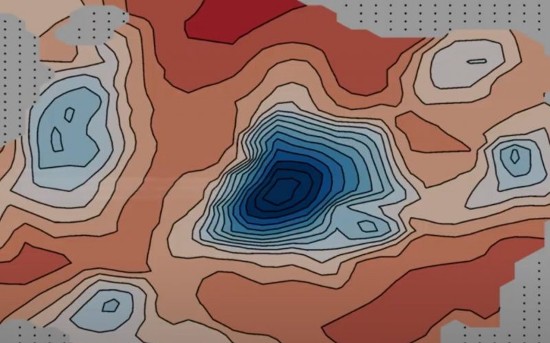The news from Mars is revealing a more complex environment than what is generally thought of in the scientific community as an arid and lifeless planet. Here are two recent discoveries that have astronomers and exo-biologists intrigued.
Organic Molecules Found on Martian Surface
The Perseverance rover continues to explore the Jezero Crater where scientists announced this week that organic molecules have been discovered. Organic compounds do not mean the existence of life because these types of molecules can form with non-biological chemical processes. It should be noted, however, that here on Earth the distribution of organics is intrinsically tied to biological sources.
What makes the discovery at Jezero even more interesting is that the compounds are being found inside drilled rocks. Similar organic compounds have been found by the Curiosity rover at Gale Crater where they were detected on the surface.
The difference in the finds is in the use of the technology Perseverance has that is more sophisticated in analyzing organic compounds both within rocks and in surface dust. The organics in rocks plus collected surrounding materials should allow scientists to better determine how these compounds formed. Scientists will get their chance because Perseverance is collecting and depositing samples in 43 different canisters that will be retrieved in the next decade in a Mars return to Earth robotic mission.
How the compounds formed is likely because of the presence of surface water at the Jezero site at an earlier time in the planet’s history.
There are Subsurface Lakes and Permafrost on Mars
Two separate discoveries of subsurface lakes containing liquid water have exobiologists intrigued. One of them is a few years old, mapped using the onboard radar from the European Space Agency (ESA) Mars Express. The second is more recent and discovered by another ESA spacecraft, the Trace Gas Orbiter or TGO.
The first liquid water lake discovery was announced back in 2018. It stretches 20 kilometres (12 miles) in width under the solid ice cap of the Martian South Pole. ESA scientists believe that the water remains in a liquid state because it contains dissolved salts and because of the pressure exerted from above by the polar ice cap. Since that 2018 discovery, three other subsurface lakes have been discovered.
The presence of underground lakes under frozen ice is duplicated here on Earth both by discoveries made on Greenland and in Antarctica. In Antarctica, a discovered subglacial lake cut off from the surface of the Earth for millions of years was drilled into by ice corers. Water samples brought to the surface contained living bacteria. Could this also be the case on Mars revealing biology that is billions of years old?
The second water discovery found on Mars was discovered in a region of the planet referred to as the Martian Grand Canyon. In fairness, Valles Marineris which straddles the Martian equator, makes the Grand Canyon in the United States look like a pipsqueak. A better comparison would be to East Africa’s Rift Valley stretching from Ethiopia through Kenya, Tanzania and Malawi.
Valles Marineris is more than 4,000 kilometres (almost 2,500 miles) long, 200 kilometres (120 miles) wide, and up to 7 kilometres (more than 4 miles) deep. In a central area of the canyon known as Candor Chaos, TGO detected high concentrations of hydrogen with the most likely explanation, the presence of frozen subsurface water similar to permafrost. The detected water lies within a metre (3.3 feet) of the surface which is unusual considering how quickly water evaporates on Mars.
States Igor Mitrofanov, from the Russian Academy of Sciences, (Russia is partnering with ESA on the TGO mission) author of a new study using the data collected by TGO, “assuming the hydrogen we see is bound into water molecules, as much as 40% of the near-surface material in this region appears to be water.” Mitrofanov further notes that this is far more water than expected and different from other Martian observations where the subsurface presence of water is a tiny fraction of this discovery.
What TGO has detected, likely ice, which in the area where discovered is considered unusual. That’s because temperature and pressure conditions in the Valles Marineris are so low that even water in subsurface ice would quickly evaporate. It is likely, therefore, that the detected subsurface ice is being continuously replenished by a liquid water underground lake.









